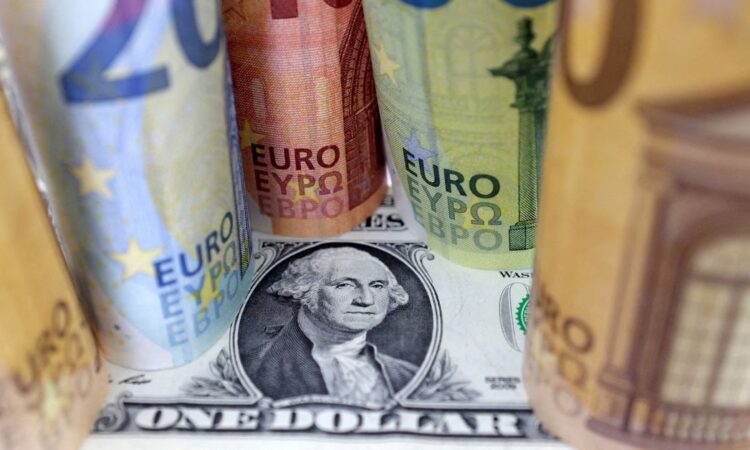
SYDNEY, Jan 23 (Reuters) – The euro scaled a nine-month high on the dollar on Monday as more hawkish comments on European interest rates contrasted with market pricing for a less aggressive Federal Reserve.
The euro reached as far as $1.0903 , breaking the recent peak of $1.08875 and opening the way to a spike top from last April at $1.0936.
It was aided by European Central Bank (ECB) governing council member Klaas Knot, who said interest rates would rise by 50 basis points in both February and March and continue climbing in the months after. read more
Knot is considered a hawk among policymakers and the comment was taken as push back against recent reports that the ECB would scale back to quarter-point moves from March.
A Reuters survey of analysts also favoured a hike of 50 basis points in March and an eventual top of 3.25%. read more
In contrast, futures have priced out almost any chance the Fed could move by 50 basis points next month and have steadily lowered the likely peak for rates to 4.75% to 5.0%, from the current 4.25% to 4.50%.
Investors also have around 50 basis points of U.S. rate cuts priced in for the second half of the year, reflecting softer data on inflation, consumer spending and housing.
Flash surveys on January manufacturing due this week are forecast to show more improvement in Europe, in part thanks to falling energy costs, than in the United States.
“The U.S. has lost its global growth leadership position if most recent PMI surveys are to be believed,” said Ray Attrill, head of FX strategy at NAB. “Meanwhile, gas prices have fallen by 60% since early December, sharply reducing the negative terms of trade shock weighing on the Eurozone/EUR.”
“Additionally, U.S. inflation is seen falling further and faster than the Fed’s own projections,” he added. “Under this scenario, the USD has scope to fall much further this year.”
Attrill now sees the euro reaching $1.1000 by March and $1.1700 by year-end.
Much the same argument goes for sterling, with markets wagering the Bank of England will hike by half a point to 4.0% at its policy meeting next week.
The pound was up at $1.2420 and within striking distance of last week’s top of $1.2435.
The dollar was thus a shade weaker against a basket of currencies at 101.740 and just a whisker for its recent eight-month trough of 101.510.
The dollar has at least managed to steady on the yen after the Bank of Japan (BOJ) defied market pressure to reverse its ultra-easy bond control policy.
Analysts assume the BOJ will stand the line until at least the next policy meeting in March, though one hurdle will be the expected naming of a new BOJ governor in February. read more
Any hint the replacement is less dovish than current governor Haruhiko Kuroda could see the yen climb anew.
For now, the dollar was holding at 129.59 yen , following last week’s wild gyrations between 127.22 and 131.58.
The focus on interest rates will make the Bank of Canada’s meeting on Wednesday of some note, with markets leaning toward another quarter-point hike to 4.5%, but that to be the end of the tightening cycle there.
The Canadian currency was a touch firmer at $1.3374 per U.S. dollar, having bounced from $1.3497 on Friday when domestic data on retail sales proved a lot less weak than expected.
Reporting by Wayne Cole; Editing by Bradley Perrett and Jacqueline Wong
Our Standards: The Thomson Reuters Trust Principles.




